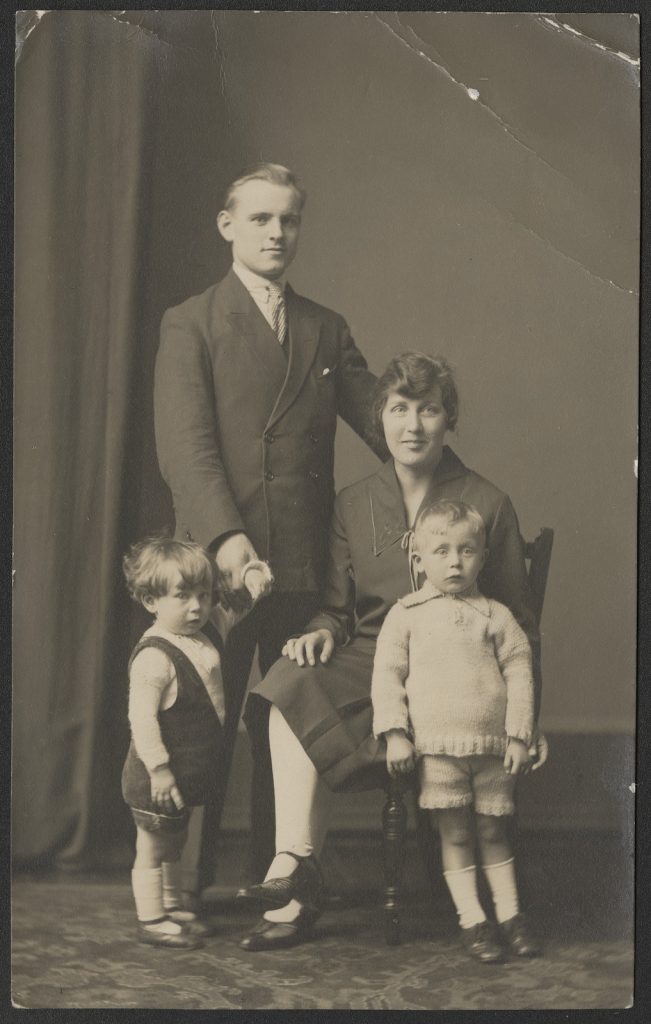Great news for family historians. On the 6th January, the 1921 Census for England and Wales will be published online through FindMyPast, in partnership with the National Archives UK.
The 1921 census is the most comprehensive census to date and its release has been much anticipated by social and family historians. In this census you can find details for every household, vessel, institution and overseas residency that were a part of England and Wales in 1921, including the Isle of Man and the Channel Islands. You can also find records for merchant ships in the waters of England and Wales, all ships of the Royal Navy and army and, for the first time, Royal Air Force units stationed overseas. This includes the various units that were still on occupation duties following the First World War, or were based in territories under British administration as a result of the war, such as Palestine, Transjordan and Iraq.

The 1921 census features several new, and very useful, categories. `Divorced’ became an official category, allowing individuals the option to record it as a marital status. Age details were more accurate as people were required to provide their age in years and months, not just in years. Children under the age of 15 were required to record whether both their parents were alive, if their father or mother was dead, or if they were orphaned. This category highlights the impact of the First World War and the Spanish Flu pandemic, with over 730,000 children recording “Father dead” and 260,000 recording “Mother dead” in the census.
As well as recording their occupation, people were also required to include the name, type and place of their employer. FindMyPast, has an excellent `search by address’ function so, by searching for an employer’s address you might locate the names of your ancestors workmates and friends, or discover that your great grandparents worked, and possibly met, at the same establishment.
What appears in a household schedule?
According to FindMyPast a standard household schedule will contain:
- Full address of the property
- Names of persons in each household
- Relationship to head of household
- Age
- Sex
- Marriage or Orphanhood
- For aged 15 and over this field recorded if you were single, married, or widowed, and for the first time D was to be recorded for those whose marriage had been dissolved by divorce
- For those under 15 this recorded if both parents were alive, father dead, mother dead or both dead
- Place of birth and nationality for those born outside the UK
- Occupation and Employment
- If in full or part-time education
- For those employed, name and type of employer, otherwise recording ’employer’, or ‘own account’
- Those out of work are instructed to give their last employer and add ‘out of work’
- Place of Work; the employer’s address (except for those in private employment such as domestic service)
- Number of children or stepchildren under the age of 16
To be filled in by married men, widowers and widows, a total number followed by a cross in a box for each age that was applicable to a child or stepchild. - Other types of schedules for institutions/prisons, merchant vessels, or the armed forces add some additional questions about function within the institution, and rank or trade rather than occupation for the armed forces. Schedules used in Wales and the Isle of Man include an additional language question, asking if each person spoke Welsh (or Manx), English, or Both, while the armed forces schedule asks additionally if the person can speak Welsh or Gaelic (in addition to English).

When can I access the census for Scotland and Northern Ireland?
Historical census records for Scotland are held by the National Records of Scotland. They are planning to release digitised images of the 1921 Census returns through the Scotland’s People website, late in 2022.
Because of the Irish War of Independence, no Irish census was taken in 1921. Separate censuses were conducted for the Irish Free State and for Northern Ireland in 1926. They are expected to be released in January 2027.
What’s next?
Sadly, it will be some years before the next census for England and Wales is released. The 1931 census was destroyed in a fire at the Office of Works in 1942 and no census was taken in 1941 during the Second World War. This means that the 1951 census will be the next census to be released. Because of the UK Government’s `100-year rule’, this will not occur until January 2052.
Thankfully we do have access to the 1939 register which provides the most complete survey of the population of England and Wales between 1921 and 1951. This National Register was taken just after the outbreak of the Second World War and contains the details of 41 million people in England and Wales. Digitised copies of the register can be accessed through both the FindMyPast and Ancestry databases. You can read more about the 1939 register here.
Access to the records
Although FindMyPast can be accessed onsite at the State Library Victoria, the 1921 census will not be immediately available within any subscription. Initially it will only be available via pay-per-view access. This fee will cover the cost of digitising and transcribing the 18,235,242 images created from the records supplied exclusively to FindMyPast by the National Archives UK.
Anyone wanting to purchase census returns will need to create a personal account with FindMyPast. Records will cost $4.80 for every record transcript and $6.60 for every original record image.
If you’d like to know more about the 1921 census, please go to the FindMyPast blog.

